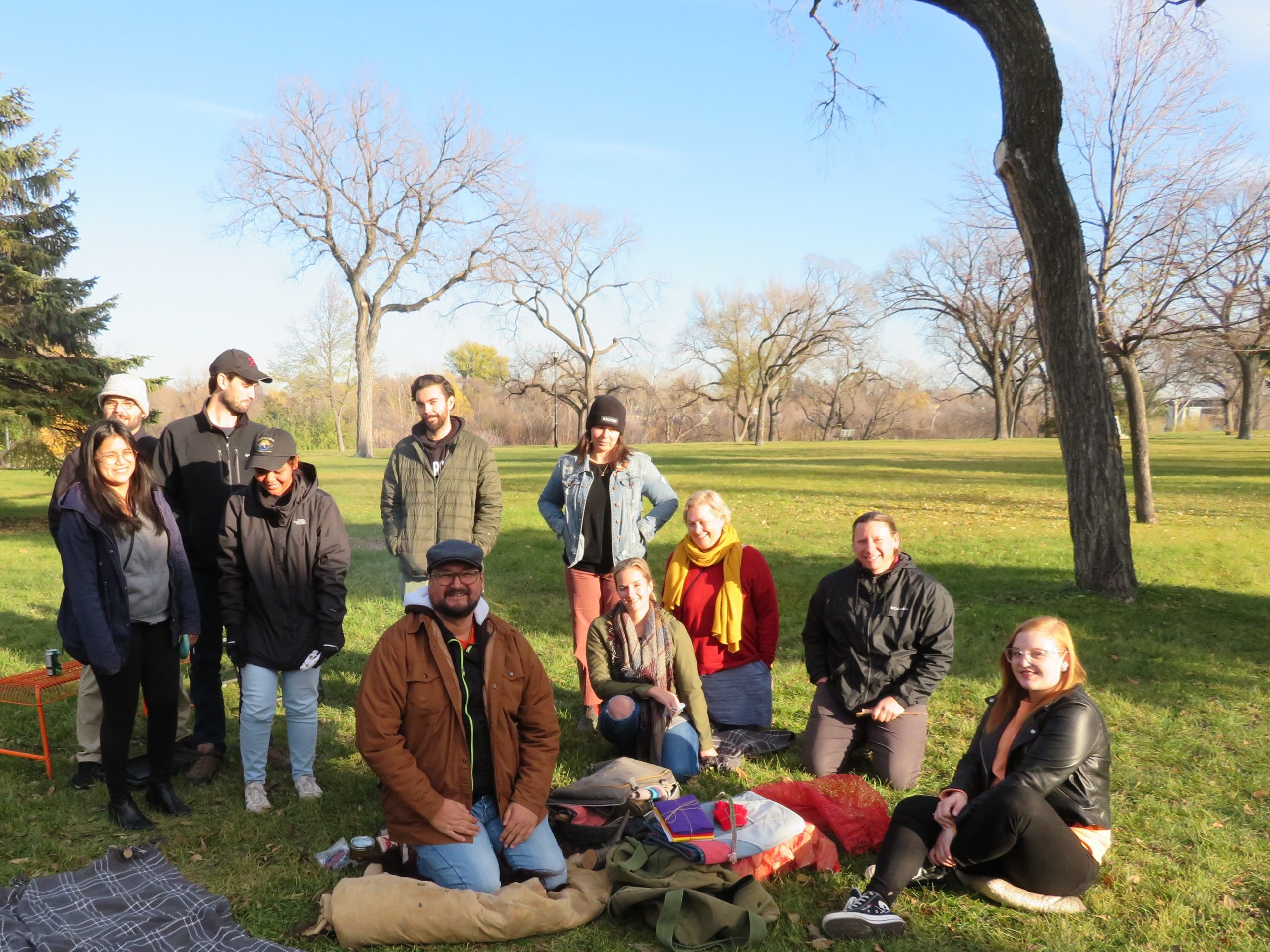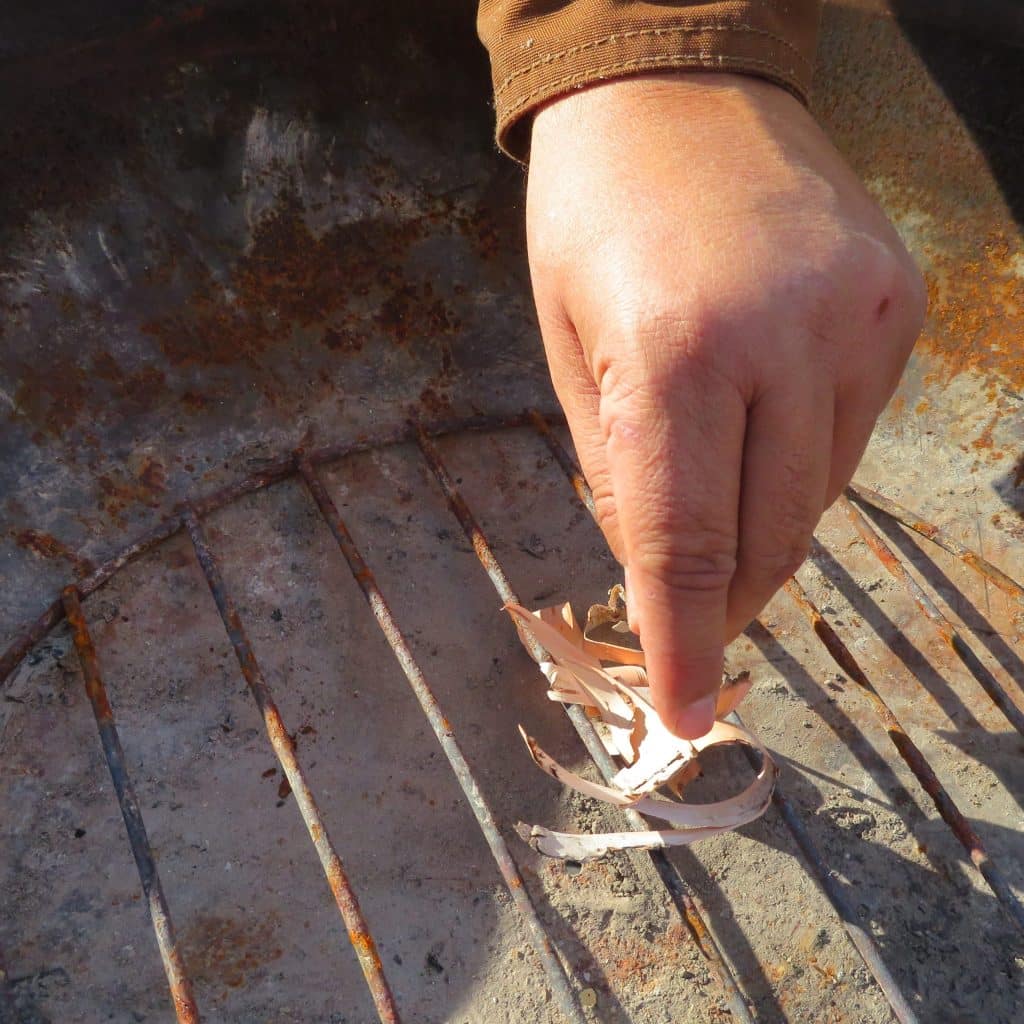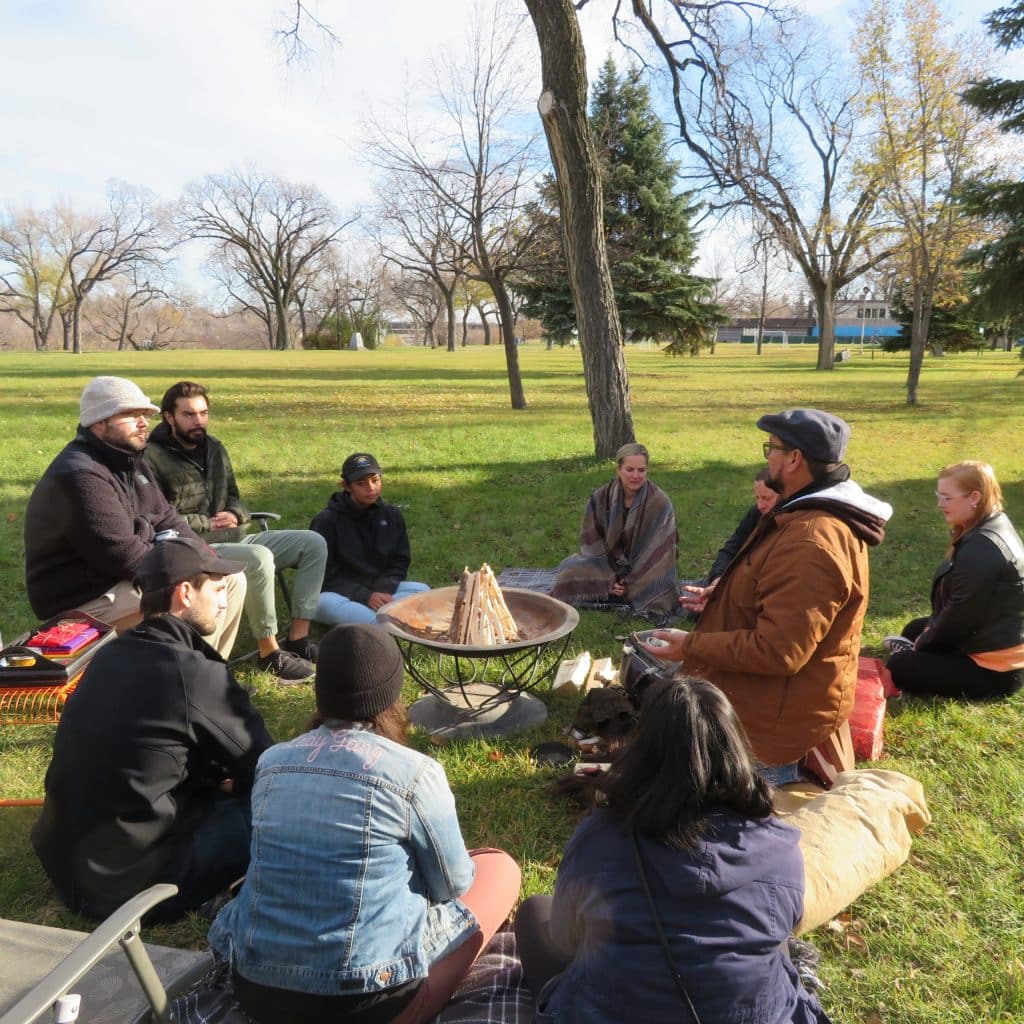Circling The Fire

On a sunny fall day ahead of a storm that would blanket the city in snow, the Vincent Design team gathered around a fire in Michaelle Jean Park. Geese flew low overhead, casting moving shadows on the grass, as Elder and Knowledge Keeper Vern Dano shared stories and songs to nourish spirits ahead of a long prairie winter.
We smudged, many of us for the first time, with Dano’s guidance. Using our hands, we directed the smoke from the medicine burning in the shell, letting it wash over our hands, heads and hearts. We learned about the four sacred medicines: tobacco, sage, cedar and sweetgrass.
Smudging is a way to clear away negative thoughts and feelings. The four elements are represented in a smudge. Water, with the use of a shell as a container; the medicinal plants for earth; the lighting of the smudge as fire; and the smoke from the smudge for the element of air.
He pointed out that smudging can be an especially good practice for people working in creative pursuits like our Vincent Design teams. A smudge clears away negativity and allows you to set your intentions for your work.
A lot of what Vern said mirrors the core idea of Vincent Design… a balance of work and life. I feel it’s important to have this in all aspects of your life, in whatever way balances you as an individual. For me it’s being outdoors and the connection to the land.
— Shaun Vincent
As a company focused on Indigenous design, we have a lot to consider, whether the work is being created by an Indigenous designer or when the project and material is Indigenous… or both. We respect and uphold that Indigenous knowledge belongs to its cultural custodians, such as Dano, and commit to bringing awareness and sensitivity to our projects with staff events like this one, held along the Red River near our North Point Douglas office.
We learned the ways tobacco can be used apart from smoking it. For example, an offering of tobacco to the ground after harvesting a plant, or scattering tobacco in the place where an animal met its fate, noting the passing of life.
He told us how sacred fires burn for four days following a death, as the passageway to the spirit world and in recognition of the stages of life from infancy, to teenage years, followed by adulthood and old age. These are all acknowledged, no matter what stage of life was achieved in the person’s journey here on earth.
A sacred fire can be used for more than marking a death, Dano told us, and doesn’t have to burn for days to be a source of healing. Anyone can use fire for reflection, connection and understanding. He asked that you do your best to not use fire if under the influence of alcohol or drugs, and that you never burn trash in a sacred fire. You can, however, save the ashes from smudging in a fire-safe container and add them to a sacred fire.


He told us an origin story of the buffalo. The buffalo followed in the destruction of a tornado. Seeing the pain and ruin left behind, he decided to challenge the one who made the storm. He was told if he made it through the storm, he would receive a gift… and the storms would still come, but only in one season, so the people could prepare.
The buffalo faced a lashing of wind and rain, transforming his moose-like extended face to a flat, broad head and neck. The buffalo’s windblown hide became a tangle of thick, shaggy fur. He continued through the storm, finally making his way to the other side. His gift? Two horns, mirroring the shape of a tornado’s funnel cloud: broad at the top and narrowing to a point as it extends to the ground. To this day, buffalos continue to face storms head-on.
Music formed another connection, as Dano’s voice carried across the park and he tapped a bison horn rattle against the ground in rhythm with a Cree song.
OUR REFLECTIONS
“I learned a lot about the meaning behind different sacred medicines and what they can represent when they are used or given as a gift.” — Kali MacDonald
“I learned that a sacred fire is a collective safe space filled with healing and humour.” — Jennifer Young
“The experience of sharing a sacred fire with our team was very connecting and grounding. I enjoyed learning different ways of how I can honour myself, family, friends, and the land. I will use these teachings from Vern throughout the rest of my life.” — Katie Robinson
“I learned that sacred fires are something anyone can do for themselves, if approached with an open mind and open heart to healing.” —Claudine Gervais
“One thing that stood out to me was the story Vern shared about how the buffalo never backed down, even in the face of storms and danger. Although his fierce steadfastness got him into trouble with Nanabozho, it was also an important lesson in facing conflict—it’s how we grow. We should look at conflict as a positive experience to learn from, instead of avoiding and never addressing it. The only way out is through.” — Arielle Villarin
“It is important to make time to come together and listen.” — Dean Selinger
“What stood out to me was the tradition of burning a sacred fire for four days. I never realized it’s purpose as a guide for spirits until Vern explained it.” — Doris Quill
“I learned about the significance of making offerings of food or tobacco, either to other people, or to nature.” — Jon Denby
“Hearing him call it a sacred fire made it feel like something not just anyone could take part in. But learning that it was just a matter of respecting the fire (and yourself by extension) and anyone can benefit from the healing of the fire makes it as approachable as going for coffee.” — Zack Ogilvie
